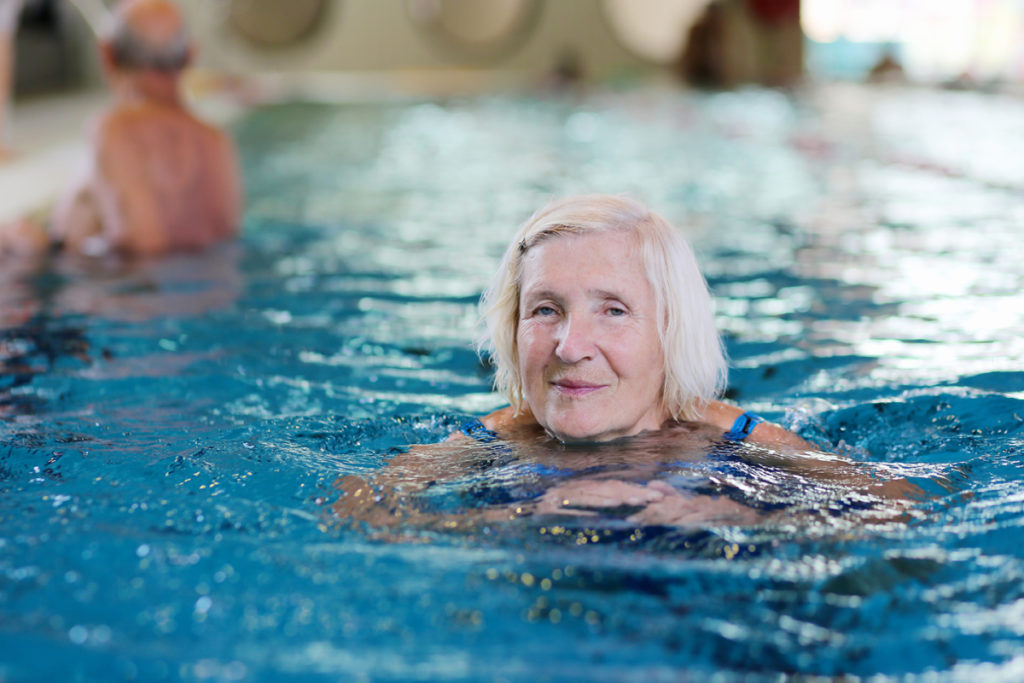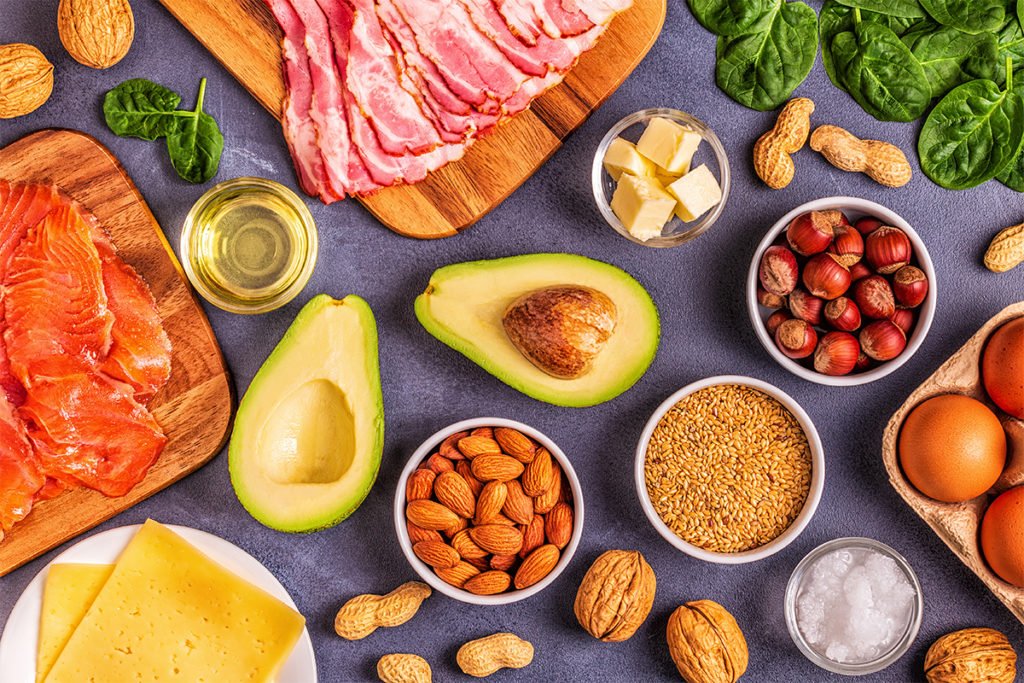Archive for January 2020
A Strong Diaphragm for a Strong Core
When you think about exercising core muscles, do you remember your diaphragm? Its two main functions involve breathing and biomechanics, and it’s one of the most important muscles for maintaining intra-abdominal pressure (Nelson 2012). Intra-abdominal pressure is like a weight belt applied from the inside. If your body can’t regulate this pressure, you may experience poor motor control and lack of spinal stability. Plus, when the diaphragm is not properly engaged, other muscles must compensate, increasing your risk of injury.
Read MoreAquatic Walking Benefits
Water exercise is a great alternative to treadmill or outdoor walking for people who experience discomfort when training on land.
Read MoreExercise as Medicine in Cancer Care
Serving cancer survivors is another area in which exercise is being acknowledged as an important part of the healthcare continuum. New guidelines, developed by an international group of experts, advise people living with cancer to avoid inactivity.
Read MoreFinally, a Trick That Gets Kids to Eat More Broccoli
Most parents will agree that getting their kids to eat greens can be really difficult. Simultaneously offering them multiple options seems to be a solution.
Read MoreWill You Get Faster on a Keto Diet?
Many proponents of the ketogenic diet claim that it not only helps with weight loss but also increases exercise endurance by making the body more efficient at burning fat and ketones for energy. However, an investigation by New Zealand researchers, published in Medicine & Science in Sports & Exercise, hints at a different outcome.
Read MoreHunger on the Mind
British researchers found that hunger can significantly influence the choices we make. For the study, reported in Psychonomic Bulletin & Review, a group of 50 participants answered questions at two separate times, once 2 hours after eating and once after fasting for 10 hours. Participants had the option of immediately receiving a reward (including money) or waiting for a more substantial reward later on.
Read MoreAttack on Snacks
Perhaps a snack tax would be more effective than a tax on sugary drinks for reshaping the way we eat. Based on economic modeling, British researchers are suggesting that a 20% price increase on highly processed snack foods like candies and chocolates would reduce calorie intake in the U.K.’s population enough to bring about an average weight loss of 2.9 pounds over a 1-year period.
Read MoreAnother Win for Gluten
People without a gluten-related disorder (for instance, celiac disease or nonceliac gluten sensitivity) did not experience gastrointestinal symptoms like bloating after consuming gluten flour twice daily for 2 weeks, according to a double-blind, randomized controlled study in the journal Gastroenterology. This is more evidence to counteract the belief that eating gluten-free as a lifestyle choice is the healthier way to go.
Read MoreFebruary 2020 Question of the Month: Is Your Fridge a Food-Waste Black Hole?
People eat a lot less of their refrigerated food than they expect to, and they’re likely throwing out perfectly good items as a result of misunderstanding labels. This is according to a study in the journal Resources, Conservation & Recycling that aimed to suss out what is contributing to Americans’ rampant food waste.
Read MoreGender Equality Among Spotters
A spotter’s gender does not influence bench press performance during a 1-RM testing protocol, according to a 2019 report in the Journal of Strength and Conditioning Research (2019; doi: 10.1519/JSC.0000000000003156) This is true whether the weightlifter is male or female.
Read MoreCold-Weather Clothing Training Impact
State-of-the-art cold-weather protective clothing adds a metabolic cost from the extra weight, independent of thermal effects, and you may not need bulk to optimize comfort and warmth, according to a study published in Applied Ergonomics (2020; 82, 102956).
Read MoreHealth and Wellness Coaching Approved as Healthcare Service
Health and wellness coaching has hit an important professional milestone. The AMA has officially recognized the role of health and wellness coaches as nonphysician healthcare professionals by approving procedural codes for tracking health and well-being coaching services. This means that health and wellness coaches who are certified by either the National Board of Health and Wellness Coaching (NBHWC) or by the National Commission for Health Education Credentialing Inc. are recognized as Category III healthcare professionals.
Read MoreMagnificent Magnesium
How much do you think about magnesium?
Chances are, you and your clients don’t give this marvelous mineral the credit it deserves. Name the bodily function, and chances are pretty good that magnesium is somehow involved. It plays a role in a diverse group of over 300 biochemical reactions in the body, including a number of them specific to physical activity: protein synthesis, muscle and nerve function, energy production, oxygen uptake and electrolyte balance. It’s also involved in blood glucose control, blood pressure regulation, structural bone development, normal heart rhythm and more (ODS 2019).
Read MoreDogs Help People Get Active
In a review of 10 studies—published between 1950 and 2019—that included 3.8 million people, researchers found that dog owners had a 24% lower risk of dying than nonowners during follow-up periods averaging 10 years.
Read MoreMidlife Gait Speed Linked With Lifelong Aging
How fast you walk at midlife may provide insight into your future physical and mental fitness. Researchers from Duke University in North Carolina and the University of Otago in New Zealand evaluated data from more than 1,000 male and female participants, who were assessed at intervals from birth to age 45 on factors including physical function, gait speed, aging pace and neurocognitive function.
Read MoreBest Focal Strategy for Weightlifting
The mental aspect of strength training is often given short shrift, but now a systematic review has analyzed relevant research to determine which most benefits weightlifting performance: focusing externally on the intended weightlifting result, focusing internally on the body or having no specific focus.
Read MoreStick to the (Nutrition) Plan
With each new year comes an influx of clients, friends, and colleagues with lofty health and nutrition goals. Which is a good thing. But it’s no surprise that by the time the new year confetti settles, those resolutions may have fallen by the wayside. Here are some expert tips to help your friends, clients, and self make 2020 the year of keeping nutrition goals within sight and success within reach.
Read MoreWhat’s the Word on Keto for Weight Loss?
Finally! Gone are the days where fats were a 4-letter word. Research has dispelled the myth that a diet rich in energy-dense butter, marbled meats, and nuts can make you, well, fat. Informed eaters are now seeking out formerly forbidden coconut oil, fatty fish, and ALL the avocados.
Read MoreActive Pregnant Moms Boost Babies’ Fitness
Here’s more good news for pregnant exercise enthusiasts. East Carolina University researchers found that women who did 50 minutes of moderate-intensity exercise three times per week during pregnancy had babies with better neuromotor skills at 1 month old than babies of mothers who did not exercise.
Read MoreHIIT or CWT: Does Sequence Matter?
A new study, conducted under the leadership of IDEA author and presenter Len Kravitz, PhD, compared cardiovascular and metabolic responses to two exercise protocols: (1) six bouts of high-intensity interval training (HIIT) followed by three rounds of circuit weight training (CWT) and (2) CWT rounds interspersed with HIIT bouts. Fourteen trained young men (ages 25.7 ± 4.4) participated in the study, completing each of the two programs 3 days apart.
Read More


















